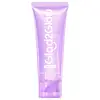What's inside
What's inside
 Key Ingredients
Key Ingredients

 Benefits
Benefits

 Concerns
Concerns

 Ingredients Side-by-side
Ingredients Side-by-side

Sodium Cocoyl Glycinate
CleansingGlycerin
HumectantCocamidopropyl Betaine
CleansingWater
Skin ConditioningDecyl Glucoside
CleansingNiacinamide
SmoothingEuglena Gracilis Extract
Skin ConditioningAlpha-Glucan Oligosaccharide
CleansingPolymnia Sonchifolia Root Juice
Skin ConditioningMaltodextrin
AbsorbentLactobacillus
Skin ConditioningTocopherol
AntioxidantXanthan Gum
EmulsifyingCitric Acid
BufferingPhenoxyethanol
PreservativeChlorphenesin
AntimicrobialWater
Skin ConditioningPotassium Cocoyl Glycinate
Acrylates/Steareth-20 Methacrylate Crosspolymer
Sodium Lauroamphoacetate
CleansingVaccinium Angustifolium Fruit Extract
Skin ProtectingPotassium Cocoate
EmulsifyingCeramide EOP
Skin ConditioningCeramide Ng
Skin ConditioningCeramide NP
Skin ConditioningCeramide As
Skin ConditioningCeramide AP
Skin ConditioningSodium Chloride
MaskingGlycosyl Trehalose
Emulsion StabilisingPotassium Hydroxide
BufferingCitric Acid
BufferingHydrogenated Starch Hydrolysate
HumectantLauryl Hydroxysultaine
CleansingCaprylyl Glycol
EmollientDisodium EDTA
Aroma
Phenoxyethanol
PreservativeWater, Potassium Cocoyl Glycinate, Acrylates/Steareth-20 Methacrylate Crosspolymer, Sodium Lauroamphoacetate, Vaccinium Angustifolium Fruit Extract, Potassium Cocoate, Ceramide EOP, Ceramide Ng, Ceramide NP, Ceramide As, Ceramide AP, Sodium Chloride, Glycosyl Trehalose, Potassium Hydroxide, Citric Acid, Hydrogenated Starch Hydrolysate, Lauryl Hydroxysultaine, Caprylyl Glycol, Disodium EDTA, Aroma, Phenoxyethanol
 Reviews
Reviews

Ingredients Explained
These ingredients are found in both products.
Ingredients higher up in an ingredient list are typically present in a larger amount.
Citric Acid is an alpha hydroxy acid (AHA) naturally found in citrus fruits like oranges, lemons, and limes.
Like other AHAs, citric acid can exfoliate skin by breaking down the bonds that hold dead skin cells together. This helps reveal smoother and brighter skin underneath.
However, this exfoliating effect only happens at high concentrations (20%) which can be hard to find in cosmetic products.
Due to this, citric acid is usually included in small amounts as a pH adjuster. This helps keep products slightly more acidic and compatible with skin's natural pH.
In skincare formulas, citric acid can:
While it can provide some skin benefits, research shows lactic acid and glycolic acid are generally more effective and less irritating exfoliants.
Most citric acid used in skincare today is made by fermenting sugars (usually from molasses). This synthetic version is identical to the natural citrus form but easier to stabilize and use in formulations.
Read more about some other popular AHA's here:
Learn more about Citric AcidPhenoxyethanol is a preservative that has germicide, antimicrobial, and aromatic properties. Studies show that phenoxyethanol can prevent microbial growth. By itself, it has a scent that is similar to that of a rose.
It's often used in formulations along with Caprylyl Glycol to preserve the shelf life of products.
Water. It's the most common cosmetic ingredient of all. You'll usually see it at the top of ingredient lists, meaning that it makes up the largest part of the product.
So why is it so popular? Water most often acts as a solvent - this means that it helps dissolve other ingredients into the formulation.
You'll also recognize water as that liquid we all need to stay alive. If you see this, drink a glass of water. Stay hydrated!
Learn more about Water